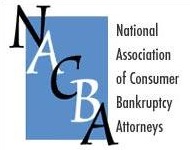
After the pandemic, when the economy lurches back into motion, bankruptcy lawyers will confront a clutch of troubled Chapter 13 cases.
In the face of disruption, distress, and the unknown, we’ll be called on to guide clients forward, in one direction or another.
Let’s review the questions we’ll need to answer in order to provide the sharpest analysis for clients.
We’ll need our arms around all of the issues in order help the client choose between staying the course; modification; conversion; or dismissal and refiling.
What drove choice of 13?
The initial question: why did this debtor file Chapter 13? Put another way, what was the goal of this case?
The range of reasons includes:
- Mortgage arrears
- Priority claims
- Car loan issues
- Non exempt assets
- Ongoing business operations
- Too much income for 7
- Not eligible for discharge in 7
Do those precipitating reasons continue to exist?
What determined the plan payment?
The next question focuses on the current monthly payment.
Was it driven by
- Disposable income
- Liquidation value
- Must-pay debts like taxes and secured arrears?
We’ll have the most flexibility in cases where disposable income drove the bus. Less income leads logically to lower payments.
Plans that address non exempt equity or must-pay debts present less flexibility in a world of interrupted incomes.
Is there disposable income?
Without a regular income, in excess of current living expenses, getting a standard Chapter 13 discharge seems unlikely. We’ll have to look at both the size and reliability of income. We’ll also need to know if living expenses have changed along with income.
If income is insufficient, are debtors willing and able to reach into retirement resources or liquidate assets to fund the balance of the plan?
And, if either of those things is possible, is it wise?
We’ll need to assess whether conversion to Chapter 7 or dismissal of the case offers a better outcome for the debtor.
Debt incurred post petition?
Just as the income side of clients’ lives have changed, consider what new debts have arisen. Are there unpaid taxes, lease arrears, business debts that need to be added to the picture?
Though not necessarily “new”, the existing mortgage may have acquired new arrears, even if a forbearance is in place. Ominously, forbearance just pauses the legal remedies available following a failure to pay.
Absent loan modification or the deferral of the missed payments til the end of the term, we’ve got new debts to deal with. And potentially, a bar to a Chapter 13 discharge if the mortgage isn’t current at plan end.
Is debtor eligible for Chapter 7?
If your debtor is eligible for a Chapter 7 discharge, you have another card to play: conversion.
Conversion could provide a discharge of post petition debts along with the debts that drove the bankruptcy. Falling asset values may render previously vulnerable assets safe from Chapter 7 trustees.
Conversion doesn’t deal with priority claims or arrears in debt secured by homes or vehicles.
And there’s the downside to playing the Chapter 7 “card”: it will be four years from filing before a Chapter 13 discharge is available again, and eight years before another 7 discharge.
Balancing act required
Given the depth of the economic disruption and the uncertainty about the economy going forward, I expect troubled Chapter 13 case to abound. We and our clients will be called to balance multiple factors and profound unknowns to chart a course forward.
But then, we can do hard things.
More
Ailing business, post pandemic







